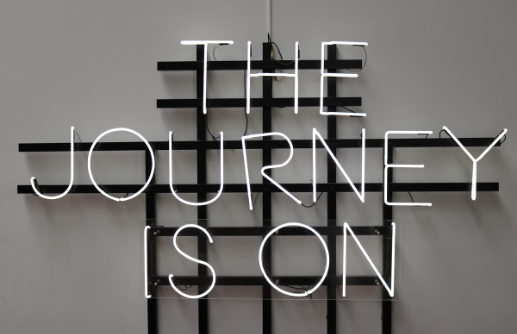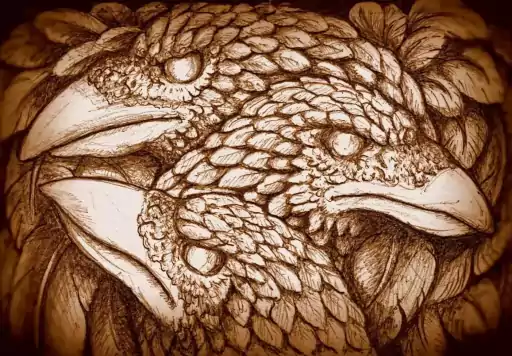
- Discover no-nonsense and uncluttered spiritual practices.
- Learn to journey to the true shamanic Upper-World and make sense of what you encounter there.
- Explore the different ‘tiers’ of the Upper-World and the different beings you encounter there.
- Learn Upper-World healing and meditation practices.
- Explore Upper-World teachings on things like compassion, detachment and ethics.
- Demystify meditation, find a practice that works for you, and take your meditation practice to new levels.
The Live Shamanic Journeying Sessions are now open to all students with an account, not just those in the Upper-World Course, so they are sold separately. You can either buy just the course for £150, or add 6 Live Sessions for just £15 more (a saving of £15 off the Live Sessions price if bought separately). Details of the Live Sessions are here.
In this course

LEARN HOW TO DO TRUE UPPER-WORLD SHAMANIC JOURNEYS, AND WHAT HAPPENS IN THEM
- How to find true Upper-World Guides.
- Finding your Upper-World “Self” or “Spirit”.
- How the Upper-World can help you develop healthy perspective and detachment (whilst staying grounded too).
- Upper-World healing practices, including the use of shamanic artefacts, light, song and sound.
- Upper-World places of convalescence and healing.
- The “Council of Elders” and its role in the resolving of entanglements (often more effective than “cord-cutting” practices), unhealthy contracts, and “curses”.
- The difference between gods and goddesses on the one hand, and Gods and Goddesses on the other.
- Honouring both the Sacred Masculine and the Sacred Feminine.

EVERYTHING IS SACRED – RISING ROOTED
Shamanism is a very ancient spiritual practice. It is rooted in animism, an entirely non-hierarchical way of perceiving and experiencing the world, a spiritual round-table. By contrast, most modern-day spirituality is based on hierarchical thinking. Ideas of human supremacy, over other animals and the rest of the natural world, and notions of ascension – the idea that “up is good and down is bad.
These hierarchical concepts are so deeply rooted into our present-day cultures, that most people just accept them as truth. However, spiritual hierarchy is not a fact! Indeed, it is an idea that only arose fairly recently in human history. It is not how we lived, or practised spirituality, in indigenous cultures for tens of thousands of years. This makes animism quite different from other spiritual viewpoints. On this course, we will explore the animist perspective in depth. We will look at how (and why) we abandoned the original Earth-centred spirituality of our hunter-gatherer ancestors. We will explore how, in abandoning original indigenous animist thinking, “spirituality” became transformed and repurposed to serve the domestication and control of ourselves and the world around us. We will see how this has deeply broken our relationship with the natural world, and with the other-than-human worlds too.

NATURE OF SPIRIT AND MEDITATION PRACTICES
We will explore shamanism’s understanding of “Great Spirit”, “Father Sky”, and “Mother Earth”, and how their interaction gives birth to the shamanic realms. Doing this will help us understand the differences between the realms, and how they relate to various aspects of ourselves – our Spirit, our Soul, our Body, our ego, and our Witness or “Aware Self”.
We will also examine the role of meditation practices in shamanism. To do this we will look below the surface details of meditation practices, to get a deeper understanding of what meditation is and how it works, from both a shamanic and a psychotherapeutic point of view. In doing so, we will see how there are meditation practices for everyone, even for people who have tried meditating and think that it “doesn’t work” for them.

THE ROLE OF RITUALS AND CEREMONIES IN SPIRITUAL PRACTICES
As well as learning how to do shamanic Upper-World journeying, we will look at how rituals and ceremonies work and may be helpful, and how at other times they may get in the way. We will look at the issue of offerings and sacrifices in shamanism, and finish by looking at cultivating healthy practices such as cleansing and energy hygiene, grounding and embodiment, respectful relationship, loving kindness, and gratitude.
Read more in our latest blog: link
practical DETAILS
The course starts on SUNDAY 2ND NOVEMBER 2025 and consists of:
• 6 pre-recorded theory modules. Each module contains a video presentation of between 1 and 3 hours in length, with accompanying learning resources. They will be released at weekly intervals on November 2nd, 9th, 16th, 23rd, 30th and December 7th.
• As usual, a website forum and an (optional) Signal group, where students can ask questions, discuss topics, share experiences and additional resources, and get support, encouragement, and a sense of community.
• Bonus recordings if and when needed.
In addition, there is the option of adding:
• 6 live shamanic journeying sessions. On each of the 6 dates above, there will also be a Live Shamanic Journeying session. These are optional, so you can buy the course without these (for £150), or add all 6 live sessions for just £15 more (a saving of 50% on the usual Live Sessions price). Whilst the Live Sessions are optional, people who attend them usually find them of great benefit. The Live Sessions start at 2pm UK time and are two hours long. Recordings of these will only be available to those who have signed up for them. Click here for more details of our Live Shamanic Journeying sessions.
THE CURRICULUM
(MIGHT BE SUBJECT TO CHANGE)
Module 1: We have an Upper World problem
We begin by looking at a tension that runs deep in our culture – the way the Upper-World has been distorted and used to separate us from animist ways of being. At its heart, animism is profoundly non-hierarchical: there is no myth of human supremacy, no ranking of spirit over soul, of male over female, or heaven over earth.
Yet with domestication and the Fall came the rise of hierarchical, disembodied spiritual thinking. Ascension, perfection, purity, orthodoxy, and heresy—all became tools of social control. Emperors turned into gods, commandments dictated behaviour, and spirituality was pressed into service as a weapon of domestication. From original sin to the belief in being unclean or imperfect, we inherited ideas that keep us small—promising a cure for the very wound they create.
Animism, by contrast, threatens such systems precisely because it empowers us. It tells us there is nothing wrong with us, that we will not be punished, that nature is alive and sacred, and that life is not something to escape from, but something to fully inhabit. Small wonder then that it has been deliberately suppressed, written off as “primitive,” and erased through genocide or buried by missionaries. These distortions live on in our very language, and even in contemporary animist cultures that have become entangled with hierarchy.
In this module, we’ll untangle the difference between animism and contemporary spirituality, and return to the simple but radical truth: everything is alive, everything is sacred – including you.
Practices will include:
- To identify non-animist spiritual thinking in yourself.
- What if you live as if everything is sacred?
- What is you are sacred – there is nothing wrong with you. That becoming human is the thing to be.
- To get grounded in the LW (deepening connection with your PA, connecting to the Standing People, finding a LW Human Guide/Tribe, finding your LW Soul).
Module 2: Deeper into the Realms
- Learning how to ascend from the axis mundi with your Power Animal always beside you.
- Journeying to discover your own Upper World imagery – contemporary or animist, while learning to discern and navigate carefully.
- Exploring the layered, spacious tiers of the Upper World.
Module 3: What animism and shamanism really are
- Meeting your Upper World “Guide.”
- Meeting your Upper World “Self.”
- Exploring disentanglement practices and the Council of Elders.
- Working with colour and sound healing.
Module 4: Magical thinking
What happens when “spirituality” becomes untethered from grounded reality? In this module, we confront the patterns of magical thinking that shape our modern-era personal and collective lives – and explore how beliefs can both guide and mislead us.
We’ll examine pre-personal, personal, and transpersonal layers of experience, unpack the “pre-trans fallacy” that is rife in much modern-day spiritual thinking, and look at the issue of spiritual bypassing—using “spiritual” practices to try and avoid dealing with tough emotions and reality. You’ll see how a divided brain can distort our perceptions, and how ungrounded spiritual beliefs can feed spiritual sickness, co-wetiko, and con-spirituality.
A balanced mind creates grounded spirituality. The left brain has a vital and healthy role to play in spirituality. It does this by keeping us grounded through discernment, fact-checking and healthy scepticism, wanting evidence, and by spotting logical fallacies and secondary hypotheses.
Practices will include:
- Noticing ungrounded spiritual beliefs in yourself.
- Journeys and exercises to explore the balance between insight and discernment.
Module 5: Meditation, rituals, and tradition
In this module, we explore meditation, rituals, and traditions, focusing on cultivating the Witness (or, Aware Self) part of us, the conscious self that observes without bias. Meditation and shamanic practices can strengthen our Witness, helping us step back from wonky stories (including wonky “spiritual” ones), from our middle-world dramas and habit patterns, and connect instead with our healthier Upper, middle, and Lower World selves.
We will also look at stripping away the clutter that meditation practices sometimes come wrapped in, and instead see the underlying mechanisms through which they work. We will see how meditations are in a particular sense (usually either visual, auditory, or sensory/movement), tend to be wide-focus or narrow-focus, and either internal or external. We will see how understanding all this opens meditation up, and how we can then use this to both enhance our shamanic work, and also our meditation practices too, and how to bring the two together and integrate them more.
Practices will include:
- Meditation practices in Middle-World: cultivate deliberate awareness across different senses and channels
- Shamanic Meditation: practice in the Upper or Lower-World
Module 6: Soul Roots, Spirit Branches
- Resources. Not taking more than we needed or more than our fair share.
- Responsibility. Fully owning and taking responsibility for our thoughts, beliefs, choices and actions.
- Power. Not seeking power over others. At the same time, not unhealthily giving our power away.
- Reciprocal living. Only taking the benefits of belonging to community if we are willing to honour and meet the obligations and agreements too.
- Contribution. Trying to be of service and contribute usefully to community. Sharing the knowledge and gifts we have.
- Truth and honesty. Being willing to face things as they truly are.
- Compassionate living. Trying to act compassionately. Trying to practice self-compassion too.
- Tribe. Look after tribe, both human and other-than-human, and caring for the weak and the vulnerable.
- … and more!
We have an Upper World problem
We begin by looking at a tension that runs deep in our culture – the way the Upper-World has been distorted and used to separate us from animist ways of being. At its heart, animism is profoundly non-hierarchical: there is no myth of human supremacy, no ranking of spirit over soul, of male over female, or heaven over earth.
Yet with domestication and the Fall came the rise of hierarchical, disembodied spiritual thinking. Ascension, perfection, purity, orthodoxy, and heresy—all became tools of social control. Emperors turned into gods, commandments dictated behaviour, and spirituality was pressed into service as a weapon of domestication. From original sin to the belief in being unclean or imperfect, we inherited ideas that keep us small—promising a cure for the very wound they create.
Animism, by contrast, threatens such systems precisely because it empowers us. It tells us there is nothing wrong with us, that we will not be punished, that nature is alive and sacred, and that life is not something to escape from, but something to fully inhabit. Small wonder then that it has been deliberately suppressed, written off as “primitive,” and erased through genocide or buried by missionaries. These distortions live on in our very language, and even in contemporary animist cultures that have become entangled with hierarchy.
In this module, we’ll untangle the difference between animism and contemporary spirituality, and return to the simple but radical truth: everything is alive, everything is sacred – including you.
Practices will include:
- To identify non-animist spiritual thinking in yourself.
- What if you live as if everything is sacred?
- What is you are sacred – there is nothing wrong with you. That becoming human is the thing to be.
- To get grounded in the LW (deepening connection with your PA, connecting to the Standing People, finding a LW Human Guide/Tribe, finding your LW Soul).
DEEPER INTO THE REALMS
- Learning how to ascend from the axis mundi with your Power Animal always beside you.
- Journeying to discover your own Upper World imagery – contemporary or animist, while learning to discern and navigate carefully.
- Exploring the layered, spacious tiers of the Upper World.
What animism and shamanism really are
- Meeting your Upper World “Guide.”
- Meeting your Upper World “Self.”
- Exploring disentanglement practices and the Council of Elders.
- Working with colour and sound healing.
MAGICAL THINKING
What happens when “spirituality” becomes untethered from grounded reality? In this module, we confront the patterns of magical thinking that shape our modern-era personal and collective lives – and explore how beliefs can both guide and mislead us.
We’ll examine pre-personal, personal, and transpersonal layers of experience, unpack the “pre-trans fallacy” that is rife in much modern-day spiritual thinking, and look at the issue of spiritual bypassing—using “spiritual” practices to try and avoid dealing with tough emotions and reality. You’ll see how a divided brain can distort our perceptions, and how ungrounded spiritual beliefs can feed spiritual sickness, co-wetiko, and con-spirituality.
A balanced mind creates grounded spirituality. The left brain has a vital and healthy role to play in spirituality. It does this by keeping us grounded through discernment, fact-checking and healthy scepticism, wanting evidence, and by spotting logical fallacies and secondary hypotheses.
Practices will include:
- Noticing ungrounded spiritual beliefs in yourself.
- Journeys and exercises to explore the balance between insight and discernment.
Meditation, rituals, and tradition
Soul Roots, Spirit Branches
- Resources. Not taking more than we needed or more than our fair share.
- Responsibility. Fully owning and taking responsibility for our thoughts, beliefs, choices and actions.
- Power. Not seeking power over others. At the same time, not unhealthily giving our power away.
- Reciprocal living. Only taking the benefits of belonging to community if we are willing to honour and meet the obligations and agreements too.
- Contribution. Trying to be of service and contribute usefully to community. Sharing the knowledge and gifts we have.
- Truth and honesty. Being willing to face things as they truly are.
- Compassionate living. Trying to act compassionately. Trying to practice self-compassion too.
- Tribe. Look after tribe, both human and other-than-human, and caring for the weak and the vulnerable.
- … and more!
WHAT OUR STUDENTS SAY
HOW DOES IT WORK?

LIVE ONLINE TRAINING
- Pre-recorded Online Sessions With Founder of Therapeutic Shamanism, Paul Francis.
- Option to add Live Shamanic Journeying Sessions.
- Study in the Comfort of Your Own Home.

SUPPORT BETWEEN SESSIONS
- Detailed Course Notes.
- Video Recording of Every Class.
- Submit Your Questions for the Next Session and Discuss with Peers.
- Learn at Your Own Pace.

YOUR SHAMANIC TRIBE
- Meet Like Minded People.
- Connect Between Sessions in Online Groups.
- Deepen the Connection in Break-Out Rooms During Sessions.
JOIN US!
To attend the ‘Embodied Shamanism’ course, you need to have completed our First Steps course, and at least one other, Next-Steps or Further-Steps, course with us (please note, there really are no exceptions to this). There are 2 Next-Steps courses you can take before November:
Exploring the Lower-World
The Animal, Plant, Standing (Tree) and Stone People
The closing date for enrolment is November 2nd 2025. The course is highly unlikely to be repeated until 2028 at the earliest, so please do take this opportunity to book (remember, once booked, you can always work through the recordings at your own pace, and with no time limits).
Payment by instalments. We are committed to keeping our courses as affordable as we can, and this course is way cheaper than almost any comparable one. However, please remember that (depending on what country you are from) PayPal offers the option of spreading the payment over 3 monthly instalments. There is no fee at all for this, nor any interest incurred.
£150 for the course
Or just £165 bundled with 6 live sessions
Booking criteria – please read!
To sign up for any of our Further-Steps courses, people need to have completed our First-Steps course and at least one of our Next-Steps courses, as a bare minimum. This is to try and ensure people have strong roots and grounding in the Lower-World, can spot middle-world influences bleeding in, and have a deep and established bond with a truly Lower-World Power Animal. For this Upper-World course though, given the nature of Upper-World journeying, this is even more important. Because of this, as tutors, and given our decades of experience, we don’t accept people onto this Upper-World course purely based on how many courses they have done. So, if we decline your booking at this time, please don’t be offended! It is simply that you need to do other work first, and that this work cannot be rushed.


